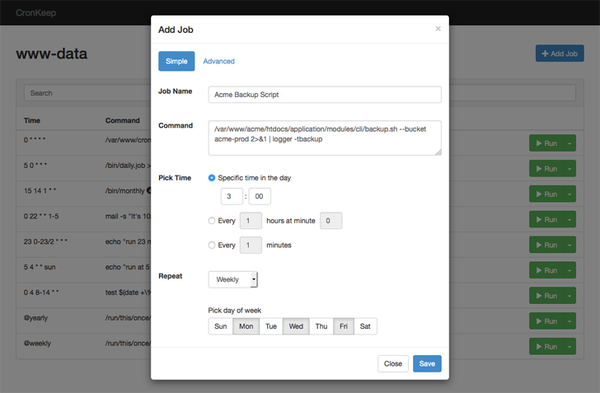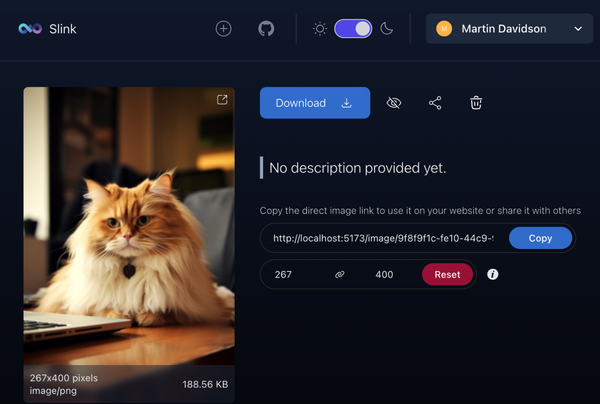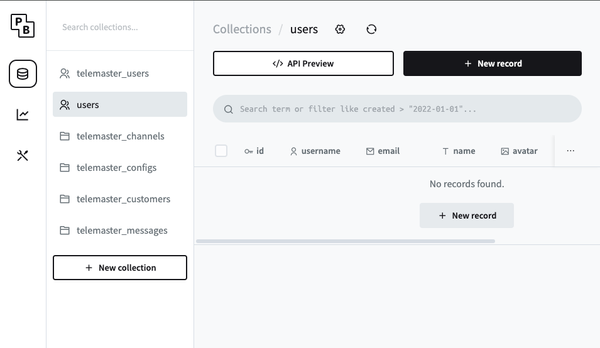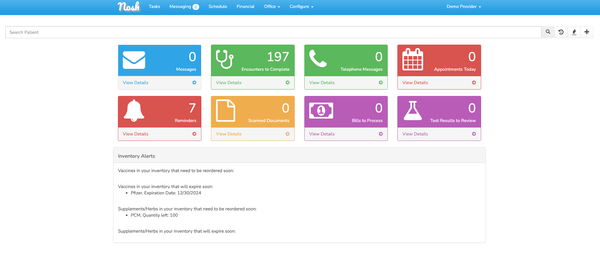The Rise and Fall of CodeIgniter and Symfony: Is It Time to Switch to Laravel?
Table of Content
CodeIgniter and Symfony, once titans in the PHP framework landscape, have experienced a notable decline in popularity over recent years. This shift in the development ecosystem warrants a closer examination of their trajectories and the factors contributing to their diminishing prominence.
Both frameworks played pivotal roles in shaping modern web development practices, but as the industry evolved, they faced challenges in maintaining their positions at the forefront of PHP development.
In this exploration, we'll delve into the rich histories of CodeIgniter and Symfony, tracing their paths from their inception to their peak popularity.
We'll analyze the key features and innovations that initially set them apart and made them the go-to choices for developers worldwide.
Additionally, we'll examine the changing landscape of web development and how these changes have impacted the relevance and adoption of these once-dominant frameworks.
Furthermore, we'll investigate the specific reasons behind their gradual decline, including technological advancements, shifts in developer preferences, and the emergence of competing frameworks. By understanding these factors, we can gain valuable insights into the dynamic nature of the web development field and the challenges faced by established technologies in maintaining their relevance.
Let's embark on this comprehensive journey through the rise and decline of CodeIgniter and Symfony, uncovering the lessons learned and the implications for the future of PHP development:
CodeIgniter: from RAD development to a serious Concerns
CodeIgniter, initially released in 2006 by EllisLab, rapidly ascended to prominence in the PHP framework landscape. Its meteoric rise can be attributed to several key factors that resonated strongly with the developer community. Firstly, CodeIgniter's simplicity stood out in an era when many frameworks were becoming increasingly complex.
This simplicity translated into a gentle learning curve, making it accessible to both novice and experienced developers alike. Secondly, its lightweight nature meant that applications built with CodeIgniter were notably fast and responsive, a crucial advantage in the performance-conscious world of web development.
Moreover, CodeIgniter's excellent documentation played a pivotal role in its widespread adoption. The framework's creators invested significant effort in producing comprehensive, clear, and user-friendly documentation, which greatly facilitated the onboarding process for new developers and served as a reliable reference for experienced users.
This commitment to documentation set CodeIgniter apart from many of its contemporaries and contributed substantially to its growing popularity.
The combination of these factors - simplicity, speed, and superior documentation - created a powerful draw for developers.
Many developers appreciated the framework's ability to accelerate development cycles without sacrificing performance or requiring a steep learning curve. This unique blend of attributes positioned CodeIgniter as a go-to choice for rapid application development, particularly for smaller to medium-sized projects where quick deployment was a priority.
But then, what happened? The Purge
However, as the web development landscape underwent rapid evolution, CodeIgniter began to face significant challenges. The framework's initial strengths - its simplicity and lightweight nature - gradually became limitations in the face of increasingly complex web applications and emerging development paradigms. CodeIgniter struggled to keep pace with modern practices and features that were becoming standard in the industry.
Its slower adoption of newer PHP features and reluctance to embrace more complex architectural patterns meant that it began to lag behind more progressive frameworks.
This reluctance to evolve more rapidly led to a gradual decline in CodeIgniter's popularity, especially among developers working on larger, more complex projects that required advanced features and scalability.
While the framework maintained a loyal user base, particularly for simpler applications and legacy systems, it increasingly found itself overshadowed by more modern, feature-rich alternatives that were better equipped to handle the demands of contemporary web development.
Key notes:
- Initial Success: CodeIgniter's simplicity and speed made it a favorite for rapid development.
- Slow Evolution: The framework was slow to adopt modern PHP features and practices.
- Ownership Changes: Multiple changes in ownership led to inconsistent development and support.
Is it Recommended to use CodeIgniter nowadays for big Projects?
While CodeIgniter has its merits, it is generally not recommended for new projects in 2024 for several reasons:
- Outdated architecture: CodeIgniter's architecture, while simple, doesn't align well with modern development practices and design patterns, making it less suitable for complex, scalable applications.
- Limited features: Compared to more modern frameworks like Laravel or Symfony, CodeIgniter lacks many built-in features and tools that are now considered standard in web development.
- Slower adoption of PHP advancements: CodeIgniter has been slower to incorporate new PHP features and improvements, potentially limiting developers from leveraging the full power of modern PHP.
- Declining community support: As developers migrate to newer frameworks, the CodeIgniter community has shrunk, resulting in fewer resources, packages, and third-party integrations.
- Performance concerns: While once known for its speed, CodeIgniter now lags behind more modern frameworks optimized for performance with the latest PHP versions.
These factors combined make CodeIgniter a less attractive option for new projects, especially when more robust, well-supported, and feature-rich alternatives are available.
Symfony: From Powerhouse to Challenges
Symfony, initially released in 2005 by SensioLabs, quickly established itself as a powerhouse in the PHP framework ecosystem. It garnered widespread acclaim for its robust architecture and comprehensive feature set, making it particularly well-suited for developing complex, enterprise-level applications. Symfony's popularity stemmed from its ability to handle intricate project requirements while maintaining a high degree of flexibility and scalability.
One of Symfony's most significant contributions to the PHP development landscape was its introduction of numerous innovative concepts and best practices.
These groundbreaking ideas not only enhanced the framework's capabilities but also influenced the broader PHP community, setting new standards for web application development.
Some of these pioneering concepts included:
- Component-based architecture: Symfony introduced a modular approach, allowing developers to use individual components independently or as part of the full-stack framework.
- Dependency Injection: This design pattern, championed by Symfony, promoted loose coupling and improved testability of code.
- Event Dispatcher: Symfony's event system facilitated the creation of highly extensible applications by allowing developers to hook into various points of the application lifecycle.
- Form Component: This feature simplified the often complex task of handling HTML forms, providing a powerful abstraction layer for form creation and validation.
- Security Component: Symfony offered a comprehensive security system, making it easier for developers to implement authentication and authorization in their applications.
These innovations, among others, solidified Symfony's reputation as a forward-thinking, developer-friendly framework that pushed the boundaries of what was possible in PHP development.
As a result, it became a go-to choice for projects requiring sophisticated architecture and scalability, earning the trust of both individual developers and large enterprises alike.
Key notes
- Initial Dominance: Symfony's component-based architecture and enterprise-grade features propelled it to popularity for large-scale projects.
- Challenging Learning Curve: The framework's complexity often intimidated newcomers and discouraged its use in smaller projects.
- Gradual Evolution: Despite ongoing maintenance, Symfony has been less agile in adapting to the rapidly shifting landscape of web development trends.
Reasons for the Decline
Both CodeIgniter and Symfony face similar challenges that contribute to their declining popularity:
- Rise of Laravel: Laravel's elegant syntax, comprehensive documentation, and thriving community have lured many developers away from older frameworks.
- Evolving Development Paradigms: The industry's shift towards microservices and API-first development has rendered some aspects of these frameworks less pertinent.
- Community Erosion: As developers gravitate towards newer technologies, the once-robust communities surrounding CodeIgniter and Symfony have dwindled, resulting in diminished support and resources.
- Performance Issues: Both frameworks can be resource-intensive, particularly when compared to more modern, lightweight alternatives.
- Lagging PHP Adoption: These frameworks have been slow to fully leverage features introduced in newer PHP versions, contributing to a perception of obsolescence.
Should CodeIgniter and Symfony Developers Switch to Laravel?
Developers using CodeIgniter and Symfony might consider switching to Laravel for several compelling reasons. Here are five key benefits of making the switch:
1- Modern Architecture and Design Patterns:
Laravel embraces contemporary software design principles, with a strong emphasis on the Model-View-Controller (MVC) architectural pattern. This approach promotes a clear separation of concerns, resulting in clean, well-organized, and highly maintainable code. The framework's structure encourages developers to follow best practices in software architecture, leading to improved code quality and readability.
This modern architecture is particularly appealing to teams looking to modernize their existing codebases or start new projects with a solid foundation. Laravel's thoughtful design facilitates smoother development processes, easier code management, and enhanced collaboration among team members.
The framework's architecture also supports scalability and extensibility, allowing applications to grow and adapt to changing requirements with minimal friction.
Furthermore, Laravel's adherence to modern design patterns makes it easier for developers to implement advanced features and integrate with other cutting-edge technologies, ensuring that applications built with Laravel remain relevant and performant in the long term.
2- Rich Ecosystem and Tools:
Laravel offers a comprehensive and well-integrated ecosystem that significantly enhances developer productivity and streamlines the development process. At the heart of this ecosystem are powerful tools such as Eloquent ORM, Artisan CLI, and Laravel Mix.
Eloquent ORM provides an intuitive and expressive way to interact with databases, simplifying complex database operations and relationships. Artisan, Laravel's command-line interface, automates numerous routine tasks, from generating boilerplate code to managing database migrations. Laravel Mix, a wrapper around Webpack, simplifies asset compilation and management, making it easier to work with modern front-end technologies.
Moreover, Laravel's ecosystem includes robust packages for authentication, queue management, real-time events, and more. These features work seamlessly together to create a cohesive development environment that automates repetitive tasks, reduces boilerplate code, and allows developers to focus their efforts on building core application functionality.
By leveraging this rich ecosystem, developers can significantly accelerate their workflow, improve code quality, and deliver more sophisticated applications in less time.
3- Active Community and Support:
With its vibrant community, Laravel offers extensive resources, tutorials, and forums.
This robust support network ensures developers can easily find solutions to problems, share knowledge, and stay updated on best practices, making the transition to Laravel smoother and more rewarding.
4- Robust Security Features:
Laravel comes equipped with a comprehensive suite of built-in security measures, providing developers with a solid foundation for creating secure web applications. The framework offers protection against a wide array of common vulnerabilities, including but not limited to SQL injection attacks, Cross-Site Request Forgery (CSRF), and Cross-Site Scripting (XSS) attacks.
These integrated safeguards are not merely add-ons but are deeply woven into the fabric of Laravel's architecture, ensuring that security is a primary consideration at every level of development.
By leveraging Laravel's security features, developers can significantly reduce the risk of potential security breaches without having to invest extensive time and effort into implementing custom security solutions.
This approach not only saves valuable development time but also minimizes the likelihood of overlooking critical security vulnerabilities that could potentially compromise the integrity of the application.
In addition, Laravel's security features are regularly updated to address emerging threats, providing developers with peace of mind knowing that their applications are protected against the latest security risks.
The framework's commitment to security extends beyond just prevention, offering robust tools for logging and monitoring potential security issues, allowing developers to proactively identify and address any vulnerabilities that may arise during the application's lifecycle.
5- Rapid Development:
Laravel's intuitive syntax and comprehensive documentation enable swift development. Features like route caching and built-in testing accelerate the process, allowing developers to deliver high-quality projects efficiently.
This streamlined approach saves time and resources, making Laravel an attractive choice for developers seeking to optimize their workflow and meet tight deadlines.
Should you Switch?
Switching to Laravel can provide CodeIgniter and Symfony developers with a modern, secure, and efficient framework that enhances productivity and aligns with current industry standards, potentially giving them a competitive edge in the rapidly evolving web development landscape.
In the following we offer you a table that may help beginners and agencies to choose the best for their workflow
Here's a comparison table outlining key aspects of CodeIgniter, Symfony, and Laravel:
| CodeIgniter | Symfony | Laravel | |
|---|---|---|---|
| Challenges | Limited features; outdated dependencies | Steeper learning curve; complex configuration | Rapid evolution may lead to breaking changes |
| Community | Smaller, declining community | Established but slower growth | Large, active community |
| Support for New PHP Versions | Limited; may lag behind | Generally good support | Excellent; quick updates |
| Key Features | Simple structure, easy setup | Extensive features, reusable components | Modern syntax, rich ecosystem |
| Security Challenges | Older versions may have vulnerabilities | Requires careful configuration | Built-in security features |
| License | MIT License | MIT License | MIT License |
| Recommended for Serious Projects | Not recommended due to limitations | Recommended for complex applications | Highly recommended for modern applications |
Summary
- CodeIgniter: Best for small projects or beginners, but not recommended for serious applications due to limitations.
- Symfony: Suitable for large, complex applications, but may require more time to learn and configure.
- Laravel: Highly recommended for serious projects, offering a modern framework with a rich set of features and strong community support.
In the end
While CodeIgniter and Symfony are not "dead," they face significant challenges in remaining relevant in the rapidly evolving world of web development.
For freelancers and developers, understanding this history and current trends is crucial when choosing a framework for new projects or maintaining existing ones.











